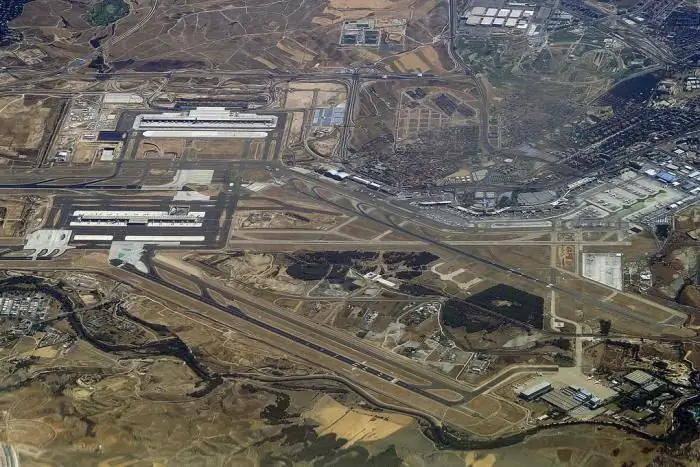- Author Harold Hamphrey [email protected].
- Public 2023-12-17 10:06.
- Last modified 2025-01-24 11:10.
The Madrid Metro is an incredibly important form of public transport in the Spanish capital. This is a fast means of transportation that operates without delay and provides large volumes of passenger traffic. The metro in Madrid first began its work in 1919: it was then that the first metro line was launched. Since then, a lot of time has passed, during which twelve more lines with left-hand traffic were built. Their total length is about 300 kilometers.

Beginning of the subway in Madrid
The Madrid Metro started operating in October 1919. Then it was one line, consisting of eight stations and having a length of 3.5 kilometers. The first tunnels were extremely compact. So, the length of the tracks was not more than 60 meters, and their width reached 1445 millimeters. By 1936, the Madrid metro consisted of three lines and had a connection with the railway station.
When the civil war took place in Spain, the metro stations played the role of bomb shelters. The fourth line was put into operation in 1944, and in the 1960s the Madrid metro was already connecting the city and the suburbs.
2007the year was marked by the fact that three branches of the "light metro" were put into operation. These are high-speed trams that run on the surface. Sometimes, when it is necessary to bypass cultural attractions, they go underground.
In the subway of the capital of Spain there is a closed ghost station "Chamberi". It belongs to the first open line, but in 1966 it came under reconstruction. As a result, she got very close to the neighboring station. It was reopened in the spring of 2008 as an underground museum.

Some numbers
The Madrid Underground is the second largest in Western Europe after the London Underground. If we consider the whole of Europe, then it takes third place, sacrificing its dimensions to the metro in Moscow. The general scheme has 13 branches, the last of which started working not so long ago. With its metro network in Madrid, it connects 327 stations. It transports over 600 million people every year and owns two radial rings.
The total area of the Madrid metro is divided into six compartments. The largest among them is compartment A. This is a feature of the metropolis, occupying about 70% of the total rail length. The remaining compartments are South, North, East, West, as well as TFM (suburbs and satellite cities). Each subway line has its own name and color. In the Madrid metro, the names are given according to the starting and ending stations.
Between stations, the length of the haul reaches 800 meters. Each train has four or five wagons. There are only three of them on night and less popular trains.

Some interesting facts
There are 145 stations on metro lines in the Spanish capital. Most of them are equipped with two or three platforms. The rails are located between them. Therefore, if a passenger decides to run into a subway car from another train, which also stands on another platform, then he will not succeed.
In the morning and in the evening, breaks between trains reach a maximum of three minutes. In the daytime or in the evening, you can expect the arrival of the next train for up to seven minutes.
Madrid metro has three types of trains and carriages: a subway car whose doors open automatically. A wagon whose doors are equipped with a lever. If you need to open them, then this lever must be raised. A carriage in which a special button must be pressed to open the door.
There are no escalators in Madrid's subway. Therefore, it does not matter how much you weigh and what your state of he alth is, whether you are in a hurry or have a lot of time, you will have to go up and down on foot.
Madrid metro is the cleanest in the world, despite being the busiest. Here, an ecological and state-of-the-art cleaning system is used to clean stations and wagons.
Modern subway technology
Recently, some lines in the Madrid subway have automatic train management and a system that allows you to automatically adjust the speed. Now the work of the driver is reduced only to closing and opening the doors, sending the train by pressingspecial button. The automatic system will do the rest of the work on its own. It is also able to increase and even exceed the speed so that electric braking does not occur. When the prohibition signal sounds, the same automatic system stops the train.
If any malfunctions are detected in the train signaling, the driver must press the corresponding button located on the control panel, and then control the train manually. In this case, the speed of the train will reach a maximum of 20 kilometers per hour.

Fare
Now many readers will have a logical question: how much does the metro cost in Madrid? Everything is simple here: one trip within the A-zone will cost 1.5 euros. Movements in all other zones cost two euros.
If a person travels by subway frequently, it is recommended to buy tickets for 10 trips. Their price is 11, 2-12, 2 euros depending on the zone.






